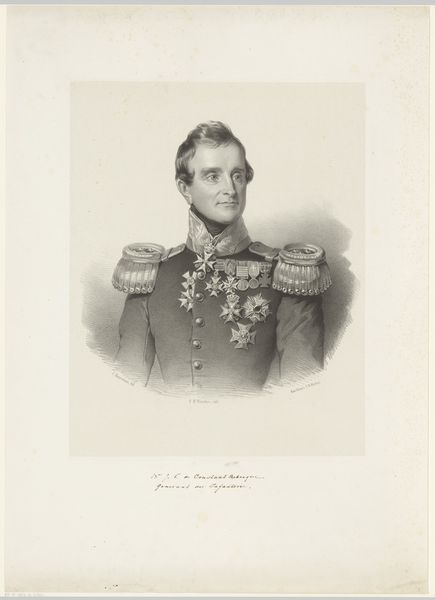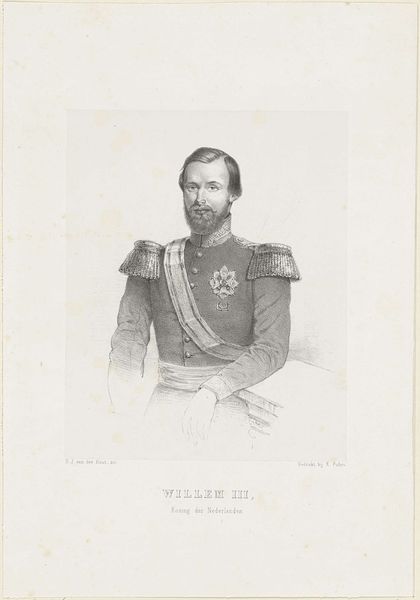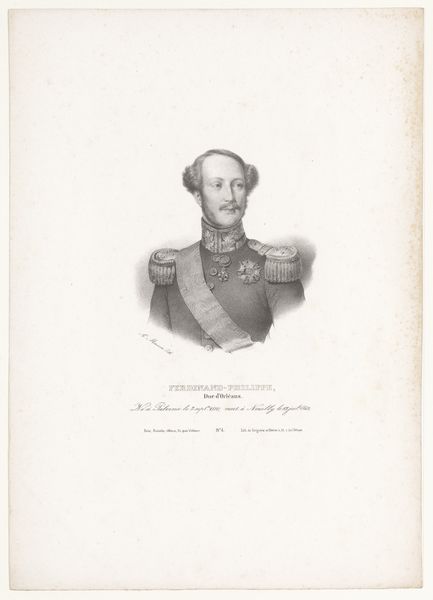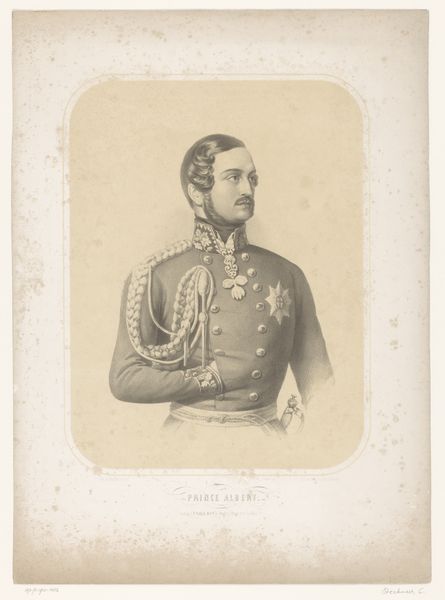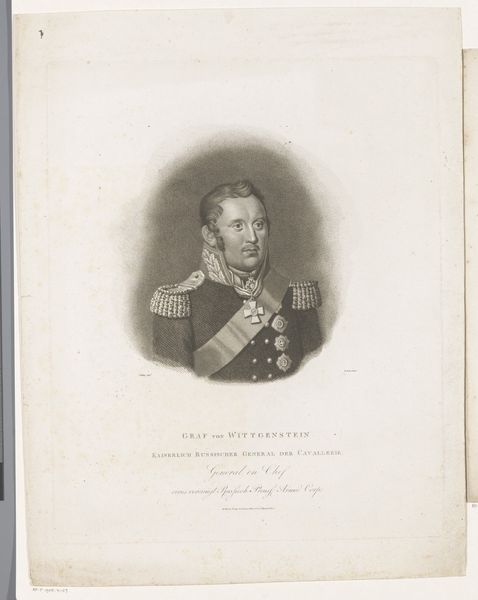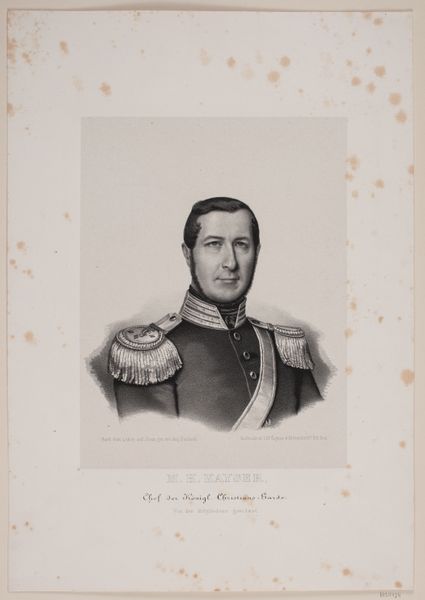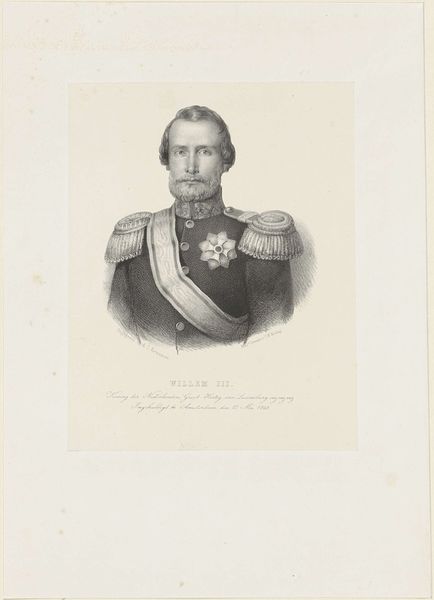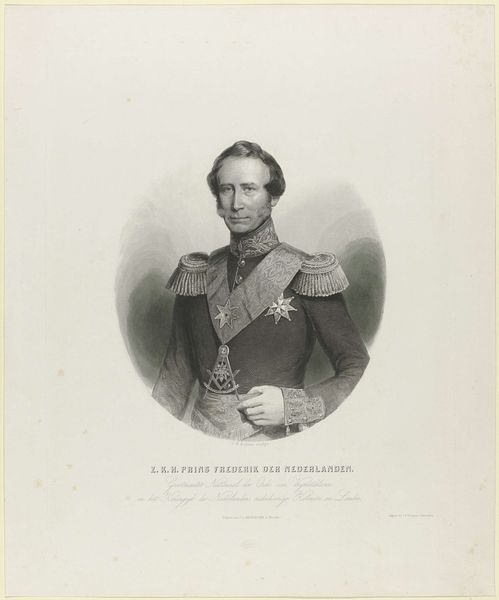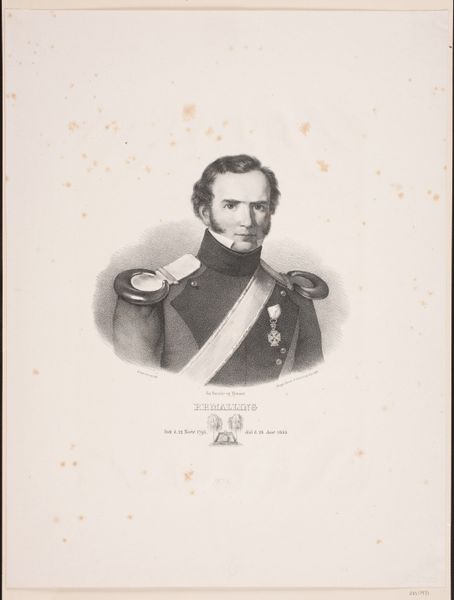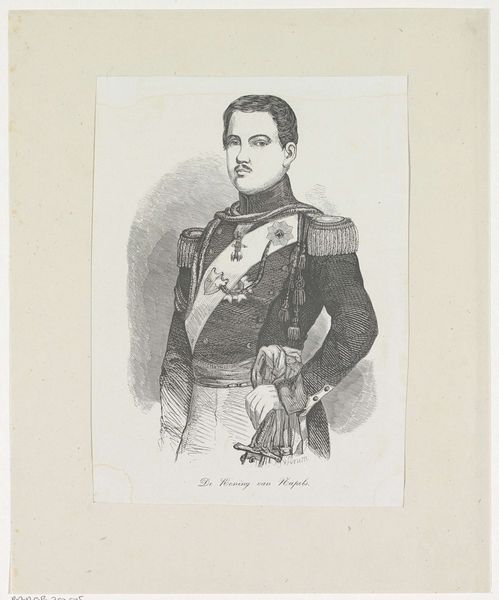
drawing, pencil, engraving
#
portrait
#
pencil drawn
#
drawing
#
pencil sketch
#
charcoal drawing
#
pencil drawing
#
pencil
#
academic-art
#
engraving
#
realism
Dimensions: height 305 mm, width 220 mm
Copyright: Rijks Museum: Open Domain
Curator: Here we have Hendrik Wilhelmus Last’s "Portret van Koning Willem III," an engraving from between 1827 and 1873, now in the collection of the Rijksmuseum. What strikes you first about this work? Editor: Its almost photographic quality is what grabs me. The tonal range achieved through the engraving technique gives an impressive realism, and it carries a distinctly solemn atmosphere. Curator: Indeed. It reflects the prevailing tastes of the period, which greatly valued realistic depictions. Think about the burgeoning power of the monarchy at the time, and the need for impactful, accessible imagery. Editor: I’m also fascinated by the details: the meticulously rendered epaulettes, the glint of metal, and the texture in his facial hair, set against the stark white background. It creates such a formal, staged composition. Curator: And this formality tells us so much about royal representation. Note the emphasis on insignia and costume, projecting power and authority through calculated visual cues meant to reinforce the legitimacy of the monarchy. Editor: It’s interesting how the detail is so focused on the upper half of the figure, and the wispy sketch of a draped cloth behind, almost like he’s emerging from the negative space of history itself. Curator: A keen observation. Artists like Last helped construct and disseminate images that legitimized royal rule. This wasn't simply a portrait; it was nation-building through visual media. These images circulated widely, shaping popular perceptions. Editor: It makes me wonder how conscious Last was of manipulating perspective through texture and tonality, and to what extent he might be subtly revealing a character beneath the monarchical uniform. Curator: That tension between public persona and the individual is crucial to understanding portraiture of this era, highlighting art's participation in power structures and the complex dance between artistic expression and social obligation. Editor: Thanks to your observations I now look at Last’s technical artistry through this new context, elevating this drawing from a well-made engraving to an important social document. Curator: I'm glad that I helped open your eyes to the deeper cultural narratives inscribed within its lines and shadows.
Comments
No comments
Be the first to comment and join the conversation on the ultimate creative platform.
